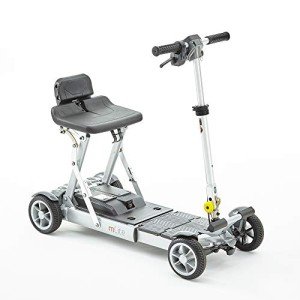The History Of Portable Mobility Scooters
Portable Mobility Scooters: Enhancing Freedom and Independence
As the world progressively moves towards inclusivity and ease of access, portable mobility scooters have become an advanced service for individuals with mobility challenges. These compact, easy-to-transport scooters are designed to empower users with the capability to navigate their environments with self-confidence and ease. In this blog site post, we will check out the qualities, benefits, and factors to consider when deciding for a portable mobility scooter, supported by tables and FAQs to offer a comprehensive overview.
Comprehending Portable Mobility Scooters
Portable mobility scooters are lightweight, battery-operated vehicles that provide an alternative mode of transport for those with limited mobility. Compiled using long lasting materials, they are specifically engineered to be lightweight and compact to facilitate easy transport in cars or on public transportation.
Key Features of Portable Mobility Scooters
Function
Description
Weight Capacity
Most scooters can support users weighing in between 250 to 500 pounds
Battery Life
Typical variety of 10 to 30 miles per charge
Speed
Normally operates between 4 to 8 miles per hour
Turning Radius
Differs from 32 to 60 inches, making them ideal for indoor usage
Foldability
Lots of designs can be easily folded for transport
Wheels
Generally equipped with either solid or pneumatic tires
Portable mobility scooters are ideal for both indoor and outdoor usage, offering stability and ease of motion.
Advantages of Portable Mobility Scooters
Improved Freedom: Users can engage in activities that were previously challenging, such as shopping and mingling, therefore enhancing overall lifestyle.
Transport Convenience: Many portable scooters can be quickly taken apart or folded, enabling users to carry them in cars and trucks, vans, or public transportation.
Cost-Effective: Compared to powered wheelchairs, portable scooters are typically cheaper, offering an affordable option.
User-Friendly Design: Most designs include intuitive controls, making them simple to operate for individuals of all ages.
Range of Options: With various brands and designs on the marketplace, potential users can select scooters that match their specific requirements— ranging from off-road usage to compact indoor alternatives.
Essential Considerations When Choosing a Portable Mobility Scooter
- Weight and Portability: Assess the weight of the scooter itself and its components. Lighter models are usually simpler to transport.
- Battery Life and Range: Consider how far you require to travel on a single charge. If you anticipate long journeys, a scooter with a prolonged battery life is important.
- Size and Dimensions: Measure where you'll save the scooter and guarantee it fits conveniently in your automobile or home.
- Comfort Features: Look for scooters with adjustable seats, armrests, and other ergonomic functions for added comfort throughout use.
- Terrain Compatibility: If you prepare to utilize the scooter outdoors, ensure it can deal with various surfaces (e.g., gravel, turf) with ease.
Consideration
Value
Weight & & Portability
Impacts ease of transport and storage.
Battery Life
Figures out variety and flexibility to check out.
Size
Crucial for storage and maneuverability.
Convenience Features
Enhances the overall user experience.
Terrain Compatibility
Guarantees versatility in outdoor conditions.
Often Asked Questions (FAQs)
1. How fast can a portable mobility scooter go?
Many portable mobility scooters can reach speeds in between 4 to 8 miles per hour. Nevertheless, the speed might differ based on the design and the weight of the user.
2. Do portable mobility scooters require a license or registration?
In a lot of nations, portable mobility scooters do not need a motorist's license or registration, however it's necessary to check local guidelines.
3. What is the common price range of portable mobility scooters?
Prices typically vary from ₤ 600 to ₤ 3,000 or more, depending on functions, brand, and specifications.
4. Can portable mobility scooters be utilized on public transport?
Yes, lots of public transportation systems accommodate portable mobility scooters, but it's suggested to sign in advance relating to policy information and area constraints.
5. What are the upkeep requirements?
Regular maintenance includes battery checks, tire examinations, and keeping the scooter tidy. It's advised to seek advice from the user manual for particular upkeep guidelines for your model.
Portable mobility scooters have ended up being a lifeline for lots of people seeking self-reliance and mobility in their lives. Their benefit, ease of use, and range of available designs enable users to pick the ideal scooter to fit their way of life.
For anybody considering purchasing a portable mobility scooter, it's important to assess individual requirements thoroughly and check out various alternatives on the marketplace. With the best option, these scooters can considerably enhance mobility and facilitate a more active lifestyle, ultimately causing enhanced health and wellness.
By understanding the features and factors associated with selecting a portable mobility scooter, users can take the primary step towards claiming their liberty once more. Whether for running lyndongiandomenico.top , delighting in the outdoors, or simply moving the home, portable mobility scooters redefine what it implies to remain active and participated in life.
